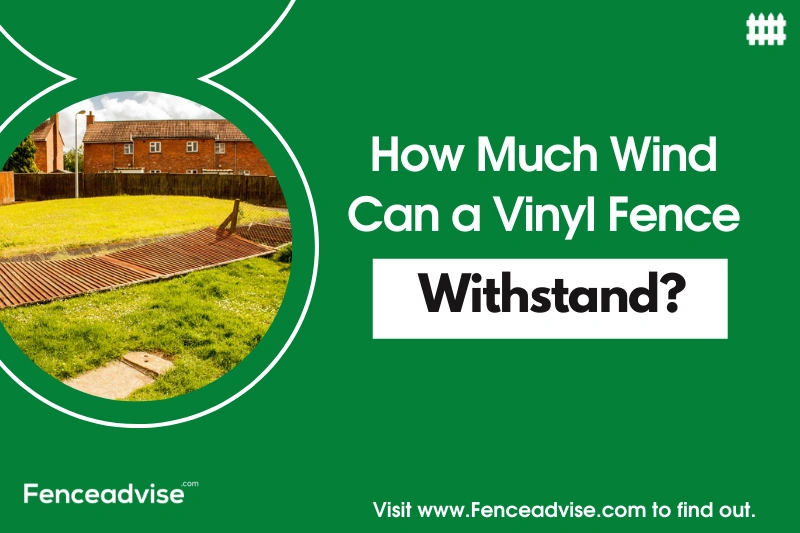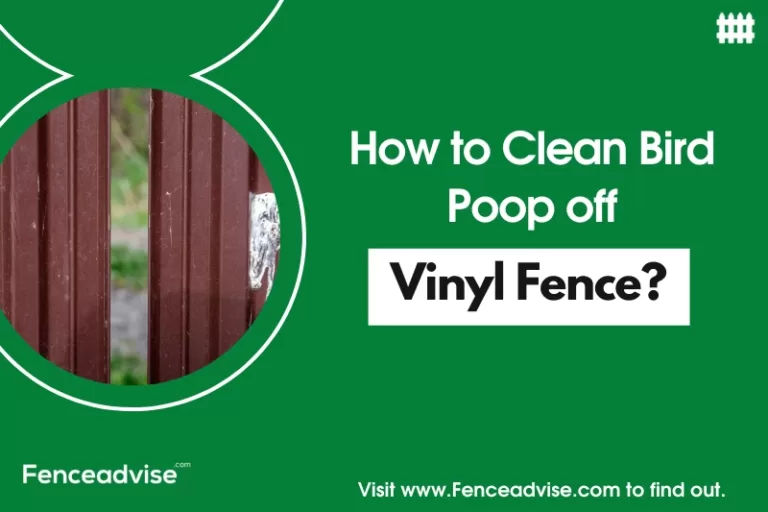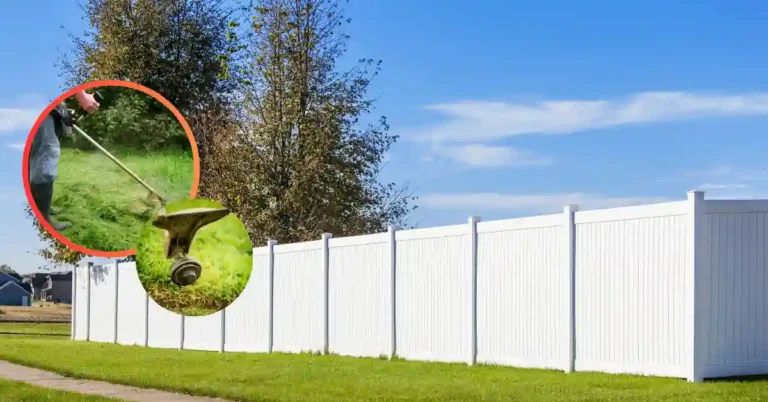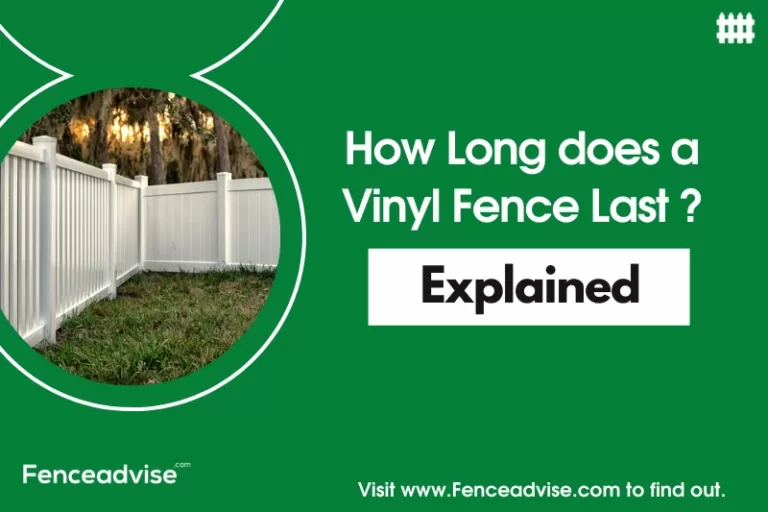We include products we think are useful for our readers. If you buy through links on this page, we may earn a small commission. Read our affiliate disclaimer here.
A vinyl fence can withstand about 65-90 mph winds before it is damaged. If you live in a high-wind area, this may not be the best choice for your fence.
Generally speaking, a vinyl fence will withstand the wind much better than any other type of fence mainly because it’s flexible. A vinyl fence can bend in high winds without sustaining damage. This flexibility also works well in protecting the fence against the elements. A vinyl fence does not expand or contract with extreme changes in temperature so it won’t crack, split, or warp over time.
A vinyl fence is a good choice when it comes to security in your yard. It’s tough and durable, yet flexible enough to not be easily damaged by wind or weather elements. Since they’re made of plastic, they will never rot or rust.
How to protect the vinyl fence from wind?
Amgo 6' x 50' Black Fence Privacy Screen
$49.99 in stock
The vinyl fence is a strong and versatile material, but the sheer power of a windstorm can cause damage. To protect your vinyl fence against the wind, you must take into consideration the following:
1. Consider a windscreen: Adding a windscreen or privacy screen to the fence can help to reduce wind exposure and protect the fence from damage.
2. Install windbreakers: Consider installing solid panels or windbreakers to the windward side of your fence to help break the wind and reduce its impact.
3. Add reinforcement: Reinforcing the fence posts with additional supports, such as concrete footings, can help to increase the stability of the fence and prevent it from being damaged by wind.
4. Height of the vinyl fence: The higher your vinyl fence, the more wind it can withstand. However, the taller the fence, the costlier it is to build and maintain.
5. Use fasteners: Make sure that all fasteners used to install the fence are sturdy and secure, such as stainless steel or galvanized screws. The material of the fasteners used in creating your vinyl fence must be strong enough to resist high winds.
6. Secure loose components: Check for loose components, such as fence pickets or rails, and secure them in place to prevent them from becoming dislodged during windy conditions.
7. Use anchor systems: Consider using an anchor system, such as ground sleeves or surface mounts, to secure the fence posts and prevent them from tipping over during strong winds.
8. Location– Your location plays a big part in deciding whether or not you need any additional protection against high winds. If you live in an area that is prone to hurricanes or tornadoes, fasten-down devices should be provided by your fencing company before installing your fence.
Some experts even recommend digging deep holes in each panel’s bottom rail and inserting 1/2-inch anchor bolts to provide an additional measure of security against the wind.
9. Fencing Company– The fencing company you hire for installing your fence should also provide adequate fasteners and anchors, such as turnbuckles and T-stakes, to help secure your vinyl fence in case of high winds.
Get Matched with Local Fence Professionals
Answer a few questions and we’ll put you in touch with pros near you.
Do Vinyl Fences Break Easily?
Having firsthand experience as a vinyl fence owner, I can confidently state that vinyl fences do not break easily. These fences are renowned for their resilience and ability to withstand various weather conditions. They’re commonly used for backyard and pool enclosures due to their durability.
The key to their strength lies in the quality of the vinyl used. Opting for a heavier weight per square foot enhances the fence’s robustness. In my experience, vinyl fences exhibit high wind resistance and endure well under harsh weather, with minimal impact from heat and sunlight.
Moreover, the material’s strength is impressive, making it nearly unbreakable by normal means. Whether leaned upon or subjected to weight, a vinyl fence remains steadfast, showcasing its durability and reliability over time.
fence advise editor’s choice
Black Fence Privacy Screen Windscreen
Should a Vinyl Fence Experience Movement in Windy Conditions?
Wind resistance is a critical factor in choosing the right fence type and design. Vinyl, known for its resistance to corrosion and rot, may face challenges in areas prone to high winds. While resilient, not all vinyl fences are created equal in terms of wind resistance, and making informed choices is essential.
Consideration should be given to the design of the fence, especially in windy conditions. For instance, installing a white vinyl picket fence may require additional measures, such as reinforcing individual pickets with a metal support bar.
This extra support ensures the fence’s ability to withstand strong winds and added pressure.
Find the right fence contractor for your project
Thin fences, measuring less than 1 ½ inches, are more susceptible to bending or damage in high winds. To address this, opting for a sturdier design and anchoring movable posts with larger posts becomes crucial. In certain locations, placing a permanent post inside the vinyl post and securing it together can enhance stability, minimizing the risk of damage during strong winds.
While vinyl fences aren’t designed to move in windy conditions, strategic placement considerations might be beneficial in specific situations, like providing shade in overhangs or allowing for movement in windy balconies.
However, finding the right balance is crucial, as excessive movement can lead to premature wear and necessitate replacement sooner than expected. Careful planning and selecting a fence designed to handle windy conditions are essential for long-lasting durability and performance.
fence advises editor’s choice
Black Fence Privacy Screen Windscreen
Signs of Wind-Induced Movement in Vinyl Fences
- Visible Bending or Leaning: Check for any noticeable bending or leaning of the vinyl fence, especially in areas prone to high winds.
- Tilted Appearance: If the individual pickets show signs of bending or the entire fence appears tilted, it indicates potential movement.
- Audible Signs: Listen for creaking or shifting sounds when the wind is strong, suggesting that the fence has moved from its original position.
- Visible Damage: Inspect the fence for visible damage, such as cracks or breaks along the structure, which may result from movement in the wind.
- Loose or Wobbly Posts: If the fence posts feel loose or wobbly, it’s a clear sign that the fence has experienced movement.
- Foundation and Support Bars: Examine the foundation and support bars to ensure they are intact and have not shifted, contributing to fence movement.
- Gate or Section Misalignment: Look for misalignment in gates or sections of the fence, indicating possible displacement due to wind.
Talk to a Fence Contractor Near You
Hurricane strength fence
In the face of powerful hurricanes that often hit the US, I strongly advocate for the use of concrete fence posts to fortify your fence. These posts provide an unyielding foundation, preventing any bending or movement during high winds and, crucially, ensuring the safety of your home.
Opting for concrete posts becomes imperative when aiming to shield large fences from the potential damage of high winds, a fact I learned through my own experiences. They don’t buckle or move, presenting a significant advantage.
Their high performance adds an extra layer of strength to your fence, guaranteeing its safety. Additionally, concrete posts safeguard your fencing from issues like buckling, bowing, or warping under the intense pressure of strong winds.
How to Windproof Double Gate Vinyl?
To windproof a double gate vinyl fence, you must make sure that the hinge points on both sides of the gates are secure enough to hold up under high wind conditions. The hinges should be marked “Heavy Duty.”
It is also possible to windproof a double gate vinyl fence by using weather stripping around the bottom of each panel. To do this, place two strips on the inside of the fence, one on either side of the gate.
If the vinyl is not already marked with a groove for weather stripping, you can add your own by using a utility knife to cut it into place.
Peel back the adhesive and stick each strip over and under the lip at the bottom of each panel. If there is a gap, use small strips of weather stripping to fill the space until the bottom is completely sealed.
What is the Best Vinyl Fence Brand?
In my opinion, the best vinyl fence brand is Ply Gem. Here is why:
- Ply Gem’s Vinyl fencing is a solution for a high-quality product that won’t break the bank.
- They use premium resins and solar stabilizers to prevent fading and UV degradation so your fence will look new for years to come.
- Guaranteed use of the latest technology by Large Manufacturers
- Made in the USA with a Lifetime warranty, Ply Gem is ICC-ES AC174 certified for safety railing, versatile & low maintenance for wherever your imagination takes you.
At FenceAdvise, we pride ourselves on being the most reliable and trustworthy source of fencing information. Our articles are based on only the highest quality sources, including peer-reviewed studies, to ensure that our readers always have access to accurate information. Read more about our Editorial Guidelines, About Us.







